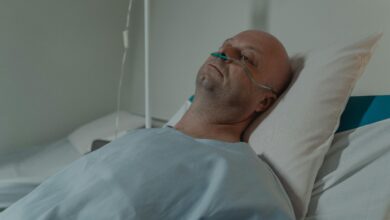How to Manage Post-Surgical Recovery: A Comprehensive Guide

Recovering from surgery is a critical phase that requires careful attention, patience, and proactive management. Whether you’ve undergone a minor procedure or major surgery, the recovery process can significantly impact your overall health and well-being. Proper post-surgical care not only promotes faster healing but also minimizes complications and ensures a smoother transition back to daily life. In this guide, we’ll explore key strategies for managing post-surgical recovery effectively.
1. Follow Your Doctor’s Instructions
Adhere to Prescribed Medications
Your doctor will likely prescribe medications to manage pain, prevent infections, and reduce inflammation. It’s essential to:
- Take medications as directed, even if you start feeling better.
- Report any side effects or concerns to your healthcare provider promptly.
Understand Activity Restrictions
Every surgery has specific guidelines regarding physical activity. For example:
- Avoid lifting heavy objects after abdominal or orthopedic surgeries.
- Gradually reintroduce exercise under medical supervision.
Failure to follow these instructions can delay healing or lead to complications.
2. Prioritize Wound Care
Keep the Incision Clean and Dry
Proper wound care is crucial to prevent infections. Tips include:
- Washing your hands thoroughly before touching the incision site.
- Changing dressings as instructed by your doctor.
- Avoiding soaking in baths or swimming until cleared by your surgeon.
Monitor for Signs of Infection
Watch for red flags such as:
- Increased redness, swelling, or warmth around the incision.
- Pus or unusual discharge.
- Fever or chills.
Contact your healthcare provider immediately if you notice any of these symptoms.
3. Manage Pain Effectively
Use Pain Relief Strategies
Pain is a natural part of recovery, but it shouldn’t be debilitating. To manage discomfort:
- Apply ice packs (if approved) to reduce swelling.
- Use over-the-counter pain relievers like acetaminophen or ibuprofen, unless contraindicated.
- Practice relaxation techniques such as deep breathing or meditation.
Communicate with Your Doctor
If pain persists despite medication, inform your doctor. They may adjust your treatment plan or investigate underlying issues.
4. Focus on Nutrition
Eat a Balanced Diet
Nutrition plays a vital role in healing. Key nutrients to prioritize include:
- Protein: Supports tissue repair and immune function.
- Vitamin C: Promotes collagen production and wound healing.
- Zinc: Enhances cell regeneration.
- Hydration: Keeps tissues hydrated and aids digestion.
Avoid Unhealthy Foods
Limit processed foods, sugary snacks, and alcohol, as they can slow down recovery and weaken the immune system.
5. Stay Physically Active (Within Limits)
Engage in Gentle Movement
While rest is important, light activity can improve circulation, reduce stiffness, and prevent blood clots. Examples include:
- Short walks around the house or neighborhood.
- Gentle stretching exercises recommended by your physical therapist.
Avoid Overexertion
Pushing yourself too hard can strain your body and prolong recovery. Listen to your body and stop if you feel pain or fatigue.
6. Get Adequate Rest
Prioritize Sleep
Sleep is when your body repairs itself. Aim for 7-9 hours of quality sleep per night. Tips for better rest include:
- Creating a calming bedtime routine.
- Keeping your bedroom cool, dark, and quiet.
- Using pillows or supports to maintain comfort.
Take Naps During the Day
Short naps can help conserve energy, especially during the initial stages of recovery.
7. Prevent Complications
Reduce Risk of Blood Clots
Immobility increases the risk of deep vein thrombosis (DVT). To mitigate this:
- Wear compression stockings if advised.
- Perform ankle pumps or leg lifts while lying down.
- Stay hydrated to improve blood flow.
Guard Against Falls
After certain surgeries, balance and mobility may be impaired. Use assistive devices like walkers or handrails to prevent accidents.
8. Attend Follow-Up Appointments
Regular Check-Ups
Follow-up visits allow your doctor to monitor progress, remove stitches or staples, and address any concerns. Missing appointments can delay identification of potential problems.
Ask Questions
Don’t hesitate to ask about anything unclear, such as when you can resume work, drive, or engage in specific activities.
9. Seek Emotional Support
Address Mental Health
Post-surgical recovery can take an emotional toll due to pain, fatigue, or frustration. Coping strategies include:
- Talking to friends, family, or support groups.
- Practicing mindfulness or journaling to process emotions.
- Seeking professional counseling if feelings of anxiety or depression persist.
Stay Connected
Isolation can hinder recovery. Maintain social connections through phone calls, video chats, or safe in-person visits.
10. Gradually Resume Daily Activities
Set Realistic Goals
Returning to normalcy takes time. Break tasks into smaller steps and celebrate small victories along the way.
Modify Your Environment
Make your home recovery-friendly by:
- Keeping frequently used items within reach. g – Using ergonomic tools to minimize strain.
11. Be Patient and Kind to Yourself
Accept That Healing Takes Time
Recovery timelines vary based on factors like age, overall health, and the type of surgery. Comparing your progress to others’ can create unnecessary stress.
Celebrate Progress
Acknowledge improvements, no matter how small. Positive reinforcement boosts motivation and resilience.




